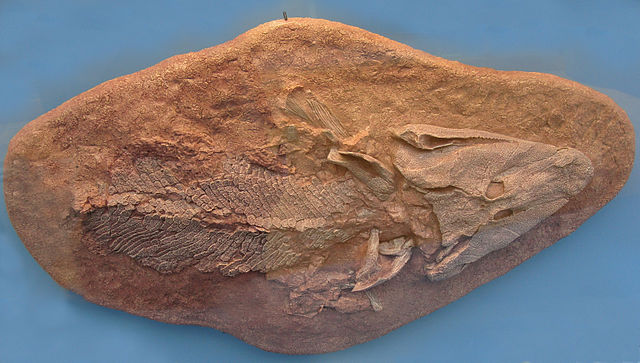Baphetidae is an extinct family of stem-tetrapods. Baphetids were large labyrinthodont predators of the Late Carboniferous period of Europe. Fragmentary remains from the Early Carboniferous of Canada have been tentatively assigned to the group. The phylogenetic relationships of baphetids is uncertain; while many studies have placed the group as a close relative of Amniota, other analyses have found Baphetidae to be a more basal clade of early stem tetrapods. Baphetids were among the first of the Carboniferous fossil tetrapods to be found and were originally described in 1850 by John William Dawson. The baphetids have been referred to the family Loxommatidae, but this group was later shown to be a junior synonym of Baphetidae, which was named earlier in 1865. Baphetids are known mainly from skulls; very little postcranial material has been found.
Baphetidae
Megalocephalus
The Stem Tetrapoda are a cladistically defined group, consisting of all animals more closely related to extant four-legged vertebrates than to their closest extant relatives, but excluding the crown group Tetrapoda. They are thus paraphyletic, though acceptable in phylogenetic nomenclature as the group is defined by strict reference to phylogeny rather than to traits as in traditional systematics. Thus, some finned sarcopterygians are considered to be stem tetrapods.
Tiktaalik, a tetrapodomorph with wrists, straddles the fish-tetrapod divide



